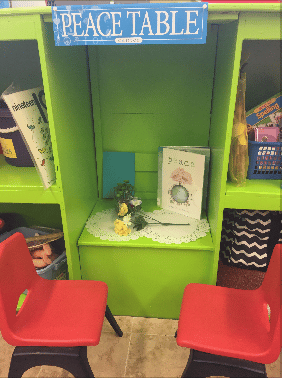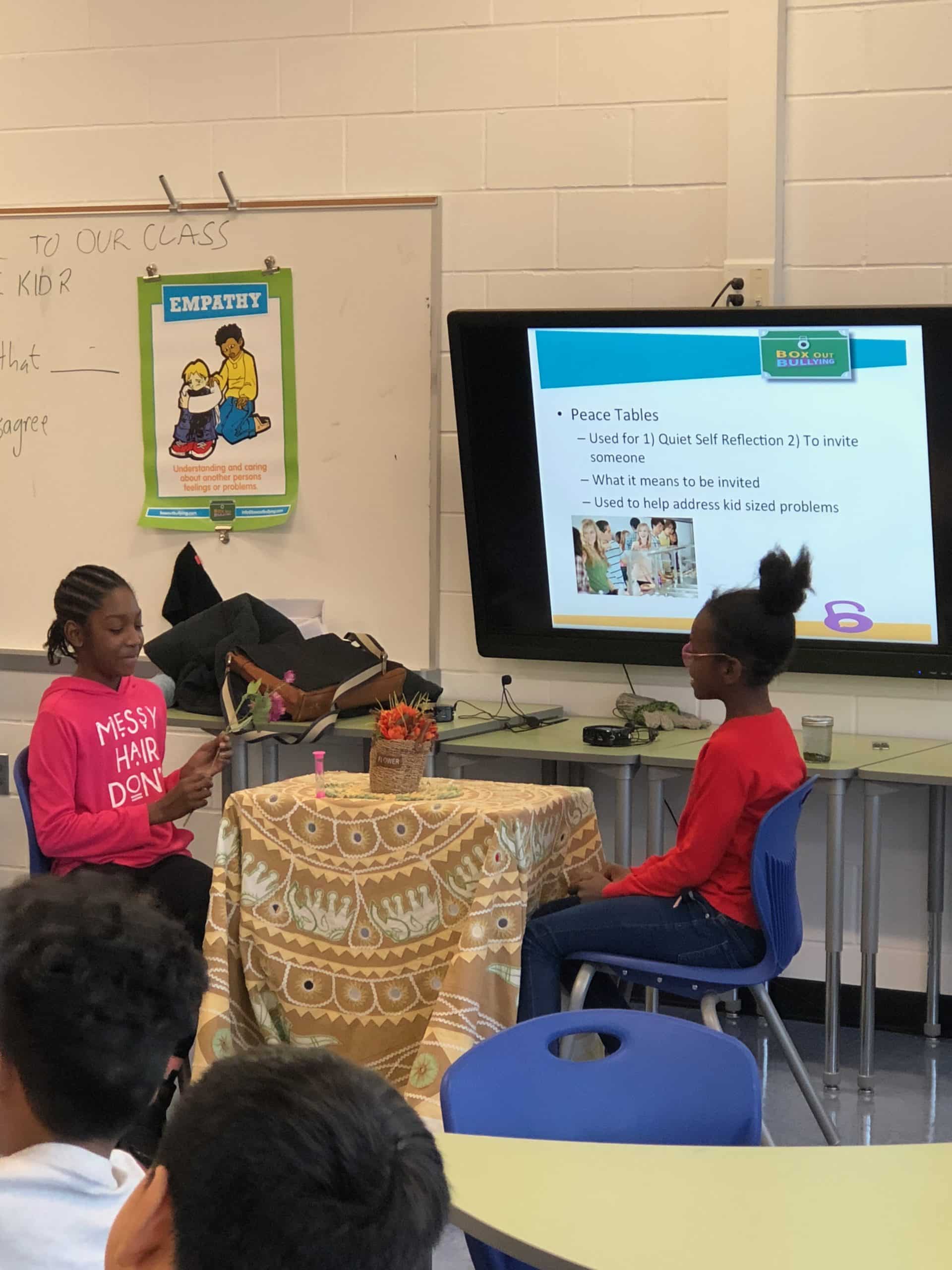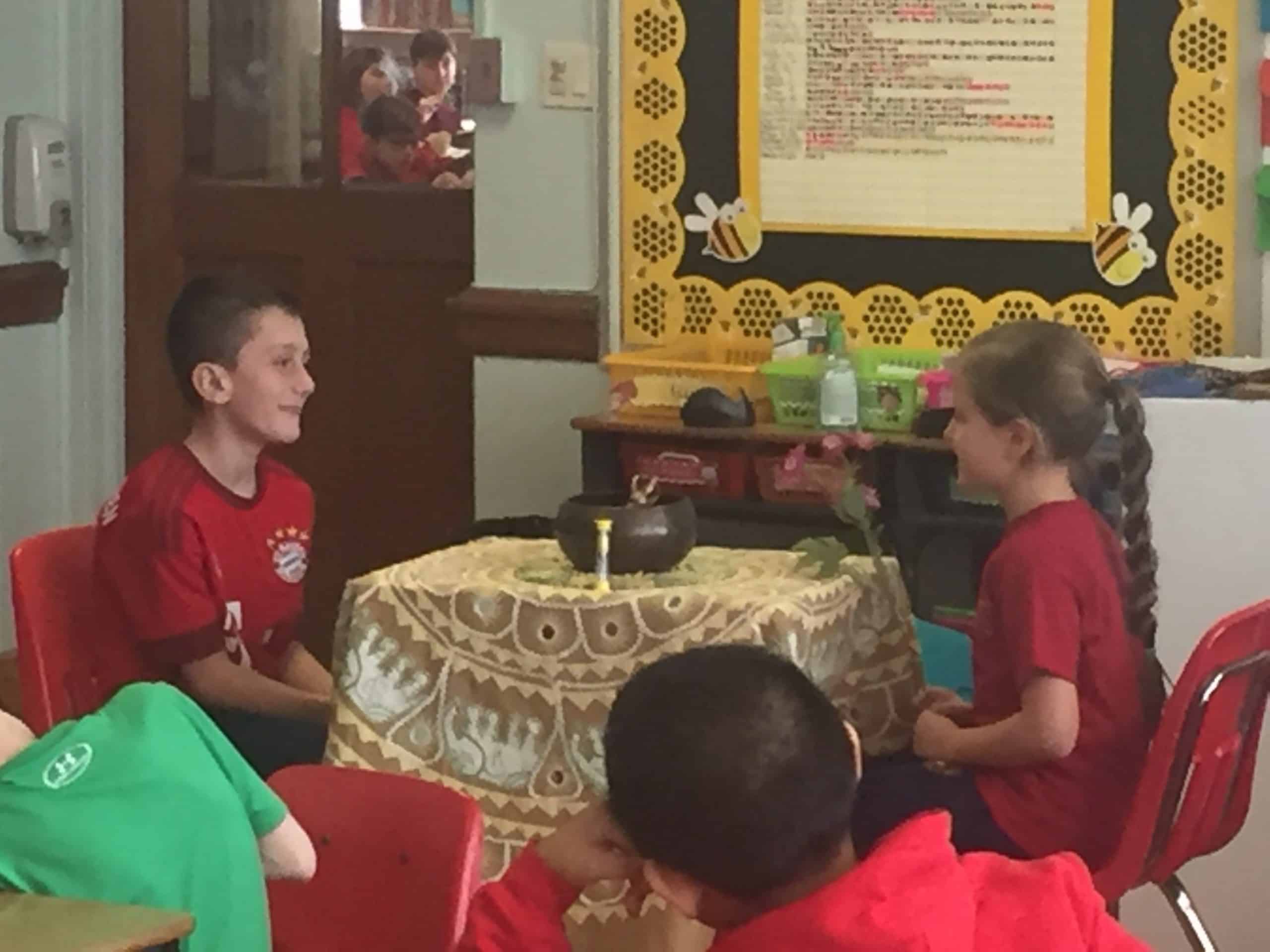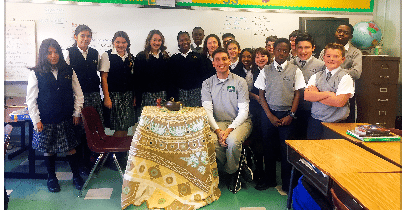The Peace Table
Do you ever feel like you’re spending so much time solving conflicts in the classroom that you’re more of a peacemaker than an educator? As a parent or caregiver, are you tired of your children getting into fights with their siblings? When children get together, conflict and disagreements are inevitable. I find that children often turn to adults to resolve the conflicts they have with their peers or family members.
Children are still and refining the social and emotional skills needed to self-regulate and negotiate with others. Being able to calmly resolve a disagreement is an important life-skill that needs to be explicitly taught to children. The Peace Table is one tool I like to use to teach these life-long conflict-resolution skills to the children in my class.
When I was a teacher, I dedicated space in my classroom which was simple and easy to set up. As a parent, I have a small spot in our apartment that easily fits a Peace Table. Setting up a Peace Table doesn’t take much effort at all. Think about how much extra teaching time you will have in your day when the children in your class begin to resolve their own conflicts instead of coming to you for every disagreement that naturally arises throughout the school day. I remember an educator came to me and told me I saved her 15 minutes in her lesson plan! Believe me, the Peace Table is an absolute classroom necessity!
Setting It Up

Location, Location, Location. So the Peace Table is successful in your classroom or home, you need to decide on a suitable place to set up your Peace Table. Pick a spot easily accessible and off to the side of the room, while still easily visible from anywhere in the room. You also want to place it far enough away from other children so they do not eavesdrop. Make it a rule that when people are using the peace table, it’s like asking to get a drink of water. Give them their space. At home place it in a quiet spot where there are not any screens. The most successful spots I’ve seen a peace table set up is in a place that already inspires the children to work quietly, ie, a reading area.
Next, placed a small foling table in the space. Add two chairs or two cushions for the children to sit on. It’s important to make the area beautiful. Children should always be surrounded by beauty. And my theory is if children associate something pleasent with something unpleasent, instead of running away from conflicts they will learn to face them head on. The addition of a colorful tapestry or tablecloths, objects of peace, and a peace lily will further help the peace table’s successful use.
By adding the peace lily, it allows someone the permission and confidence to talk and express their feelings openly without worrying about being interrupted. Remember, whoever is holding the peace lily, it’s their turn to speak and the other person MUST LISTEN. When our friend is done speaking, they will set the peace lily down, then it’s the other’s persons chance to pick it up and respond.
The peace lily will be passed back and forth until everyone has had their say. I would recommend adding a three-minute sand timer. That way it teaches someone how to be economical with their words and will equip them to solve conflicts when they are not in a classroom setting. Also, as a teacher, you know it’s not going to take too much time out of your lesson. And especially for educators with larger class sizes, having a time limit allows other students to get a chance to use the table for their own issues or concerns.
Introducing the Peace Table

I devote at least thirty minutes for a lesson to introduce the Peace Table to the class. I make sure that I’m teaching so students learn by seeing, by listening, and by doing because then I teach to all modalities of learning; this ensures students take away key concepts.
We discuss how the Peace Table can help us to resolve any future conflicts that we may have with our friends. We also discuss that this table will also be available to everybody individually as a calm down space for self-reflection.
I model to the children the ways in which I expect them to use the Peace Table. I usually invite a child from the class up to the table. This volunteer child and I will either role play an imaginative scenario, or sometimes I really do have a conflict that needs resolving (like a student not returning to class quickly after the bell, or perhaps calling out instead of raising their hand). In every class I have taught, I am always surprised at how engaged the children are with the Peace Table lesson. Children love the concept and they welcome the opportunity to resolve their conflicts independently.
Using the Peace Table

You can expect the children to spend a great deal of time using the Peace Table when it is first introduced to your classroom. You will notice that in those first few days, there will be children at the Table constantly. You might need to gently remind them what the peace table is used for: quiet self reflection or to solve a conflict. I’ve also found that it’s important to remind other students not to evesdrop when the peace table is being used by their classmates. Try not to discourage use of the Peace Table and trust that soon enough the attraction will wear off and the children will learn to both use the space purposefully and solve their conflicts independently.
Occasionally, children will still come to you with a novelty problem and expect you to step in and act as the class policeman. However, once the Peace Table is in place and the strategies have been taught, all you need to do is offer a suggestion. A simple, “you know, this would be a great opportunity to use the peace table” would suffice. The children will quickly get the message and start to fine-tune their own conflict resolution skills. Trust me. The Peace Table will become one of the most useful and important spaces in your classroom. Or home. This is great for conflicts with siblings…and spouses.
Transferring the Peace Table Strategies
Once the Peace Table is in place and the resolution processes are being practiced, it’s time to encourage the children to transfer their learned strategies to outside of the classroom. I suggest having a discussion with the children to brainstorm places the table could be used. I’ve often had children come to me during recess and lunch requesting they come inside to use it. I show them how to set up a Peace Space outside. I show them how to find a quiet place and how they can use anything (a pebble, a leaf) for the talking stone or instrument of peace.
As I mentioned before, many children like to set up a Peace Table in their own homes too. I have had so many positive comments and questions from parents eager to embed the conflict resolving concept into their homes.
How different our world would be if all adults had access to a Peace Table!

